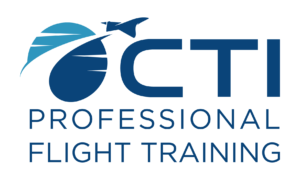Types of Pilot Licenses
You’ve probably heard about the aviation industry’s pilot shortage. This means companies everywhere are having a hard time finding qualified crewmembers to fly their aircraft. The shortage hasn’t hit the major airlines as hard as other portions of the industry, but it’s coming. It’s hard to know how long the shortage will last. One thing is for sure – flying jobs won’t wait for the pilot who postpones flight training until the economy looks perfect.
Airline Pilots
Currently, pilots for regional airlines are being recruited from major flight schools in the US. Often by the time a full-time CFI is within sight of the 1,500 hours needed to earn an airline transport pilot certificate, a regional airline has already offered them a new hire training slot. One of the big advantages to training with a flight school like CTI is our alliance with regional airlines that offer students the chance to interview early in the process.
Corporate Pilots
For some pilots, the prearranged life of an airline pilot feels like the end of the adventure and spirit that drove them to learn to fly. There is an outlet for those free spirits called business aviation. There are more than 5,000 airports across the country outside of the 500 the major airlines operate out of. Business aviation jets carrying employees and customers make up a significant percentage of the air traffic at these airports. These aircraft typically carry between two and 15 passengers. Business aviation is known to pay top-notch salaries and benefits to its flight crews.
Charter Pilots
Charter flight crews might be on call for a portion of the day or night and have little notice of the next flight until their phone rings. The trip might be a quick out and backdrop, or it might turn into a three-day event. Charter pilots usually keep an overnight bag near the back door or in the trunk of their car. Just like other sectors of the aviation industry, charter departments are struggling to find enough pilots to staff their aircraft. Salaries and benefits are good, but not on par with airlines and business aviation.
Fractional Flying
Fractional companies are large users of business-aviation aircraft as well as the pilots needed to crew them. NetJets, for example, employs about 2,500 pilots to crew its 700 aircraft. Not all fractional operators use jet aircraft. PlaneSense was created around a fleet of 40 Pilatus PC-12 single-engine turboprops. WheelsUp, operates a fleet of King Air 350is and Citation Excels. These fractional operators pay well, and are in search of cockpit crew members.
Ready for Your Pilot’s License?
Whichever type of pilot’s license you’re aiming for choosing a qualified flight school makes all the difference in time and money spent. Come visit our Florida campus or Tennessee campus. You can request a tour and see all that CTI has to offer our students.
